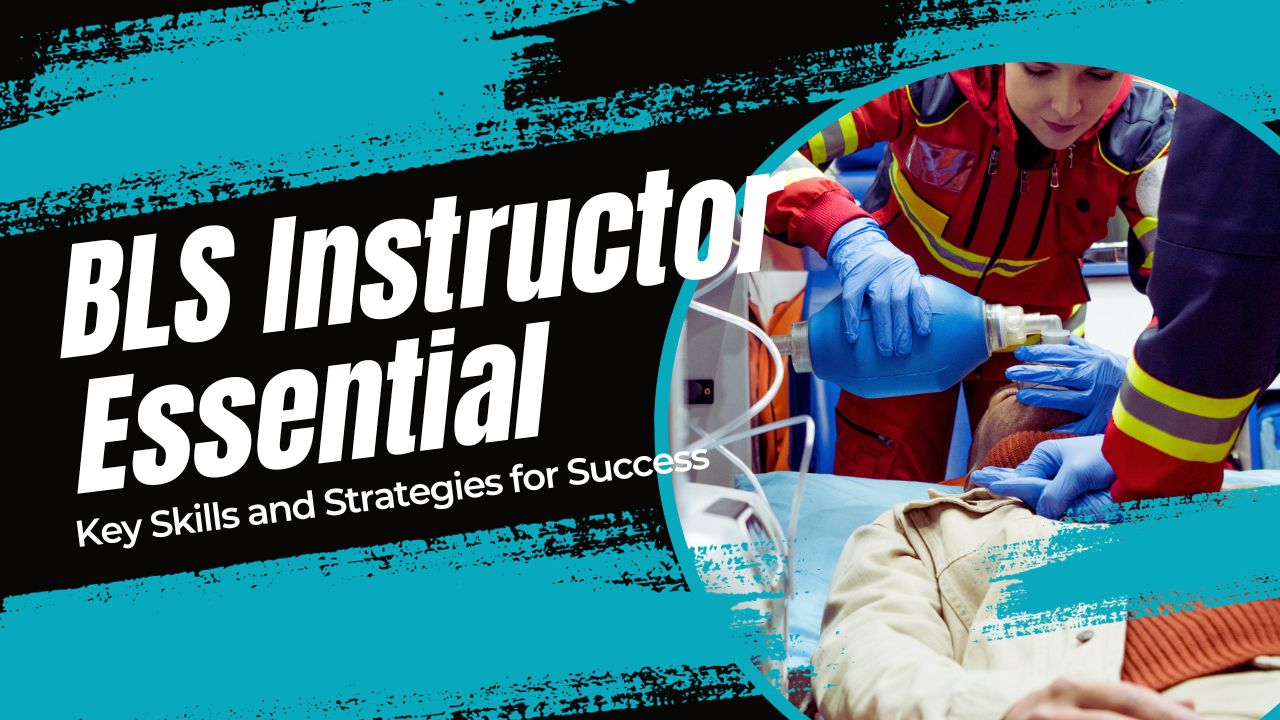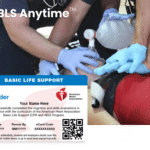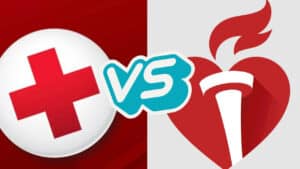BLS instructor essentials make the difference between training that sticks and skills that start to decay over time. Proper training ensures key personnel are equipped and prepared for any emergency situation, where the right reaction can make the difference between life and death. Your role as a BLS instructor can have a long-lasting impact on patient outcomes for years to come.
Understanding the Importance of BLS Instruction
A healthcare professional’s BLS skills can only be as good as the training they receive. The BLS instructor tips include providing ample time for practice as well as developing specific strategies geared toward education and retention. Studies have shown that high-quality training and implementation is the best way to equip professionals with the skills they need to optimize resuscitation efforts – which translate to a higher survival rate for patients under their care.
Mastering the Fundamentals
The American Heart Association (AHA) has put together key topics to serve as BLS instructor essentials that improve BLS skills and outcomes from cardiac arrest. Your BLS instructor skills checklist should include these six topics related to instructional design:
Mastery Learning and Deliberate Practice
Mastery learning should include a minimum passing standard with an emphasis on prioritizing behaviors that improve patient safety and clinical outcomes. Deliberate practice involves overlearning for behaviors (like BLS skills) that may be subject to decay over time.
Spaced Practice
Spaced practice is an effective supplement to resuscitation training because it allows for multiple practice sessions at set intervals for better retention of knowledge and skills. It is critical to include feedback during and debriefing after practice sessions to ensure skills are being implemented correctly. Training programs should outline clear metrics and assessment tools that ensure mastery of basic skills to improve patient outcomes.
Contextual Learning
Research has shown that putting training into the context of a real-world scope enhances training and improves outcomes. BLS instructor strategies should take into account factors associated with both the experience and characteristics of participants and the real-life environment in which they work. For example, training for healthcare professionals may focus more on working as a team, while training for laypersons might stress the importance of building confidence to initiate CPR.
Feedback and Debriefing
Training programs that allow for communication between instructors and participants tend to be the most effective, particularly when the communication includes feedback about performance and opportunities to make adjustments to improve skills. Debriefings are also valuable, which entail a reflective conversation about skills performance and specific feedback when appropriate.
Innovative Educational Strategies
Traditional training formats are not always the most effective ways to help participants understand and retain information. Use of innovative BLS instructor strategies that meet participants on their own level can boost engagement, interest, and retainment of BLS skills.
Assessment
Assessment of skills competence is a critical entry on your BLS instructor skills checklist. A comprehensive assessment process should include knowledge, skills, and integration – all in different contexts to ensure a thorough understanding of the course material. Assessments between courses can also be helpful in ensuring healthcare professionals are retaining their skills as an integral part of their patient care.
The last two key topics that should be considered part of your BLS instructor essentials are faculty development and knowledge translation and implementation. Faculty development may include workshops, seminars, short and long courses, and feedback or peer coaching. Knowledge translation involves taking information gleaned from resuscitation research and transforming it into high-quality instruction to equip healthcare professionals for cardiac arrest situations.
By incorporating these eight key topic areas, you can elevate the training experience for your students, impacting their skill level and their patient outcomes.
Developing Effective Teaching Strategies
Innovative strategies are a BLS instructor key skill that can make information more interesting and memorable. Tools like gamified learning, social media, podcasts, and crowdsourcing can boost the efficacy of BLS training both in terms of skill development and retention.
Gamified learning involves a variety of game attributes like competition, incremental difficulty, and socialization improve both engagement and knowledge retention. Social media also boosts engagement, as well as knowledge dissemination to keep critical information fresh. Podcasts offer valuable supplemental training and crowdsourcing allows for evaluation, collaboration, and engagement.
Enhancing Communication and Classroom Management
Communication with your participants is essential to helping them get a solid grasp on the information and hone their skills. In addition to providing feedback and debriefing time during practice sessions, make yourself available during breaks to participants who may be uncomfortable raising questions in front of the entire group.
Since teamwork is a crucial component to successful resuscitation, training programs should also teach and encourage effective communication between participants to ensure the BLS process is seamless and successful. Leader and follower roles should naturally develop through this communication training to provide a dynamic focused on conflict-free patient care.
Incorporating Real-Life Scenarios and Case Studies
Your training program should include real-life scenarios based on the environment in which you might be called on to administer BLS services. For example, if your class is made up of healthcare professionals, a focus on team training will be beneficial. If laypersons are your participants, you will need time to help students overcome barriers and build confidence to administer CPR.
Simulated cardiac arrest events not only improve CPR quality but also teamwork during emergency situations. Manikins of all sizes and ages are one of the BLS instructor essentials that teach skills according to the specific needs of each patient.
Continuous Professional Development
BLS training is never a one-and-done endeavor. AHA BLS certification is only valid for two years, so continuing education is a necessity to keep skills and credentials current. Some healthcare professionals also find that refresher courses between certification can help to maintain skills, which in turn improves patient outcomes. Passive knowledge in the form of posters or stickers can be helpful, but studies have not shown they provide much impact on human behavior or clinical outcomes.
Actual practice is the best way to keep knowledge and skills at the highest level. Whether it involves visiting a facility to go over the basics, teaching an online refresher course that includes practice time, or developing a session at your training center, the time invested in this additional training will make all the difference in the performance of staff and the health and safety of patients.
Are you looking for a way to put your knowledge and experience to work? SureFire CPR is looking for instructors to teach at our Southern California facilities or travel to businesses to provide on-site training. Contact us today to learn more about our teaching opportunities.
FAQ’s
1. What qualifications are required to become a BLS instructor?
A BLS instructor must have a current BLS provider certification and complete a BLS instructor course provided by an authorized training center.
2. How can I stay updated with the latest BLS guidelines and techniques?
The American Heart Association (AHA) or the American Red Cross (ARC) offer updates on BLS protocol. BLS instructor update courses, conferences, and workshops can also help you stay current.
3. What teaching resources are available for BLS instructors?
Instructor manuals, presentation slides, videos, and hands-on practice materials are all available to BLS instructors through training centers and organizations like AHA and ARC.
4. How can I effectively manage a diverse group of learners in a BLS class?
Some strategies might include visual aids, question/answer time, and individualized feedback and support during hands-on practice sessions.
5. Are there opportunities for career advancement as a BLS instructor?
Yes, experienced instructors can become BLS Training Center Faculty or pursue instructor trainer roles. Some healthcare institutions also offer specialized positions for BLS instructors who demonstrate exceptional skills and knowledge.











